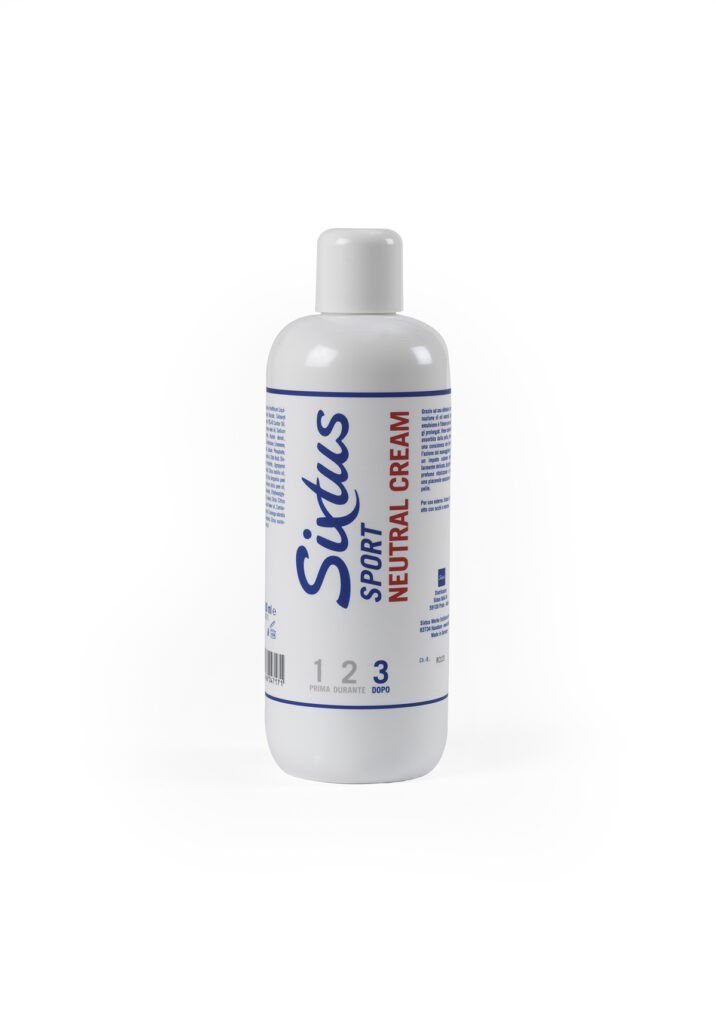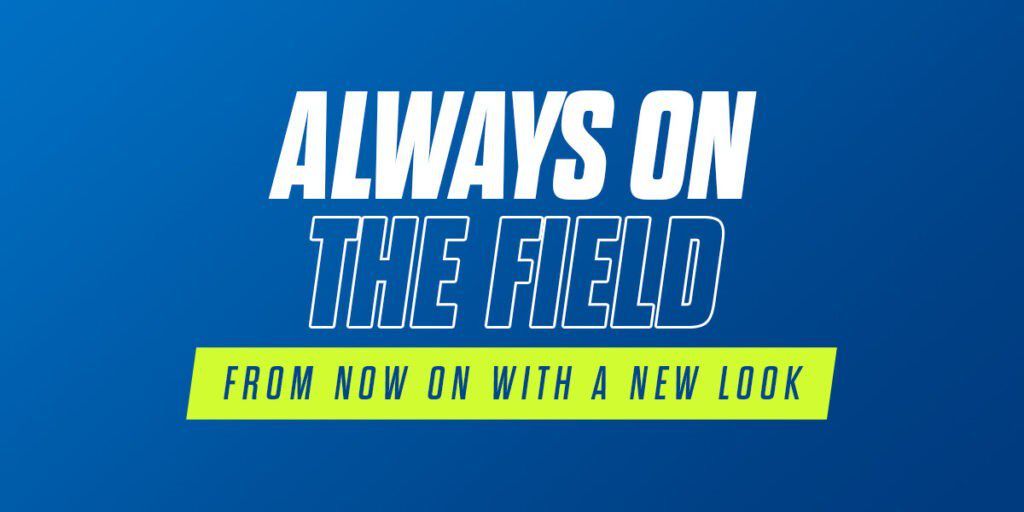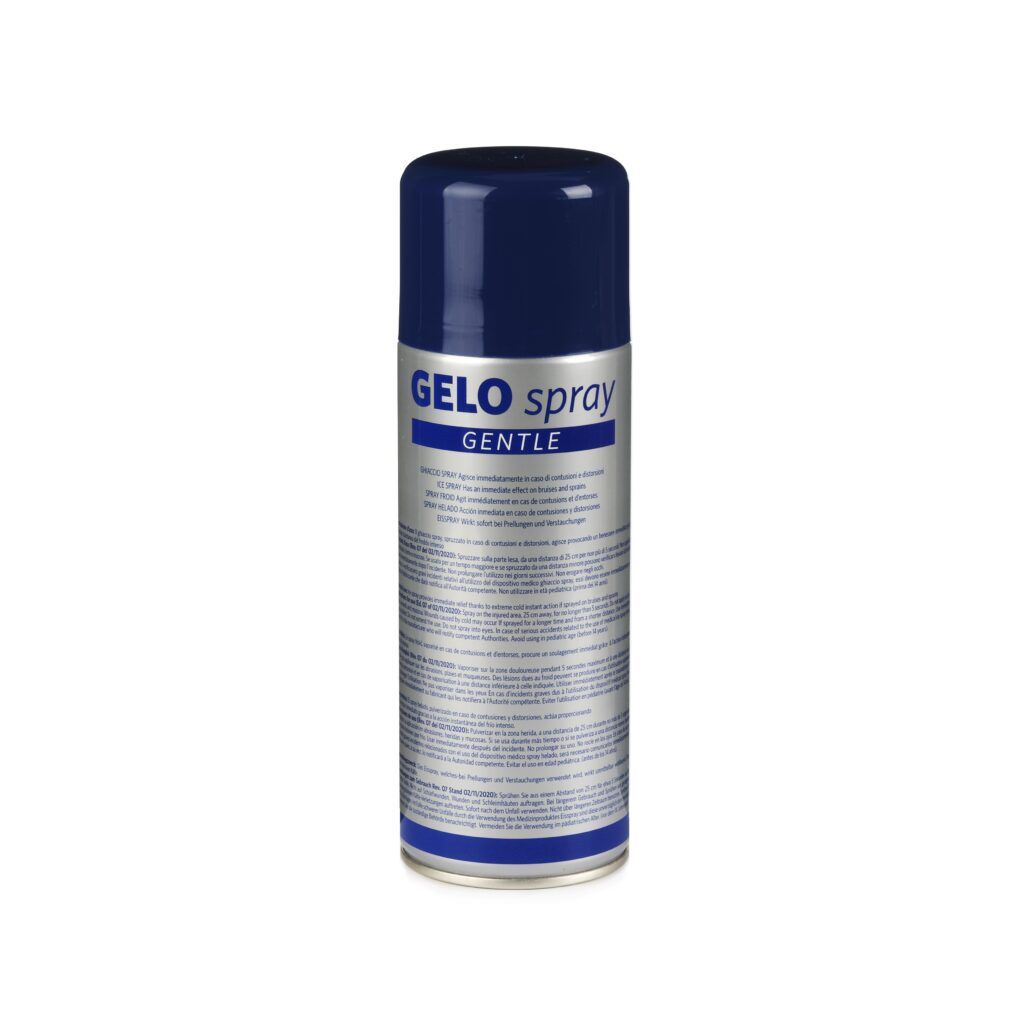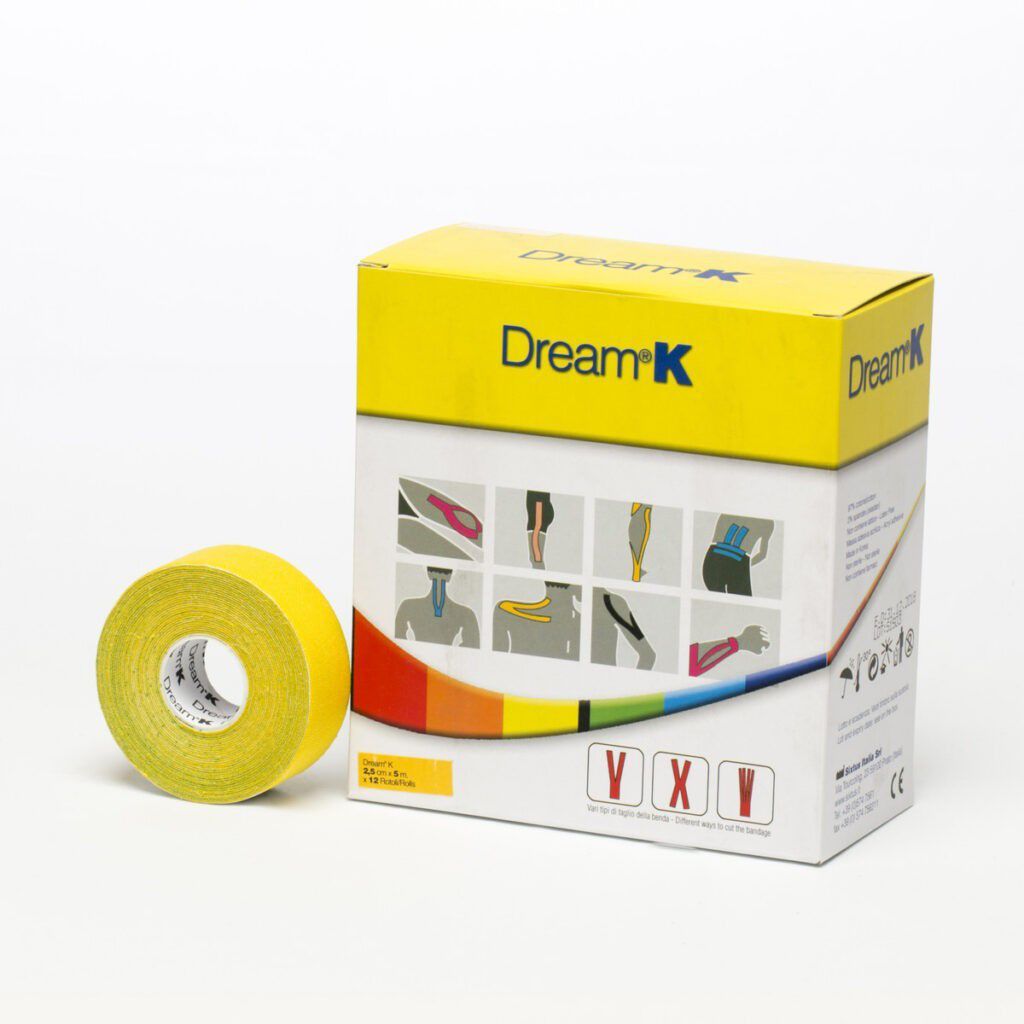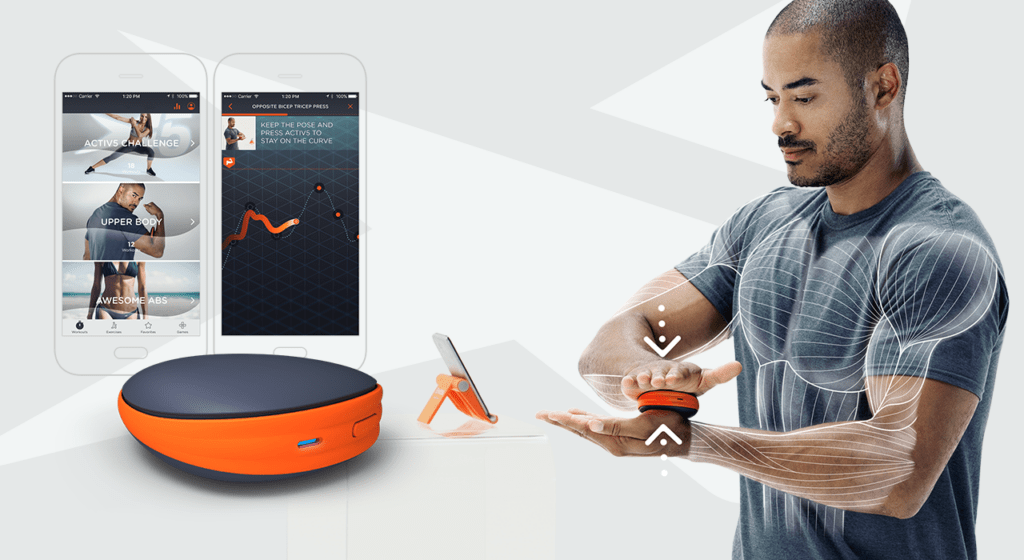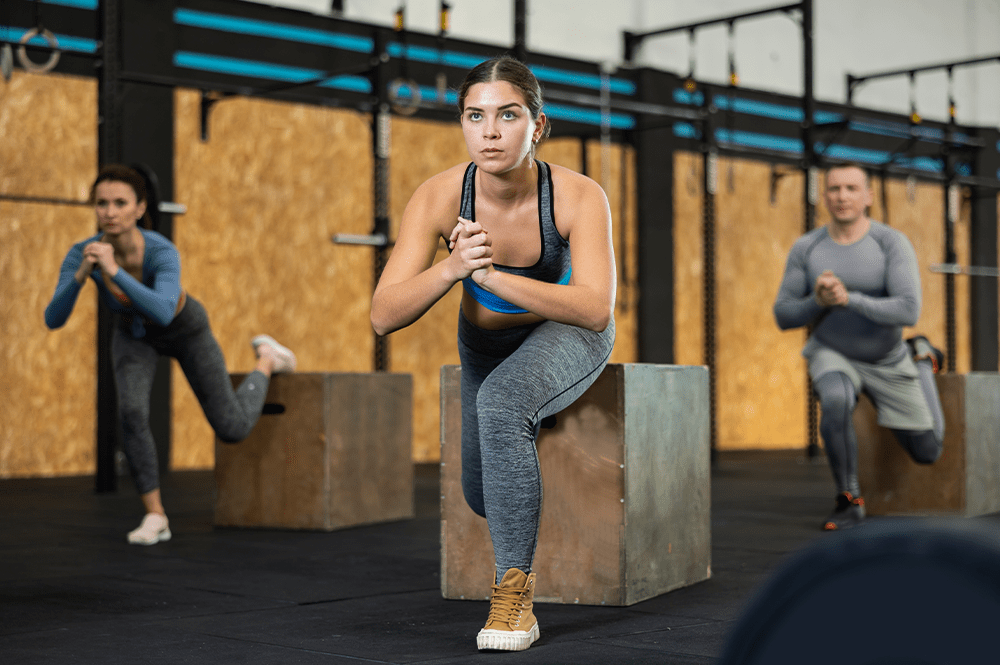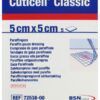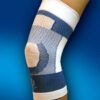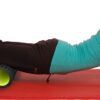Epicondylitis or tennis elbow

- 1 Definition
- 2 Symptomatology
- 3 Problem and ache
- 4 Aetiology
- 5 Diagnosis
- 6 Therapy
- 7 5 exercises
Definition of epicondylitis or tennis elbow
Tennis elbow is the most common cause of elbow pain, but it does not only affect tennis players.
The problem is known to tennis or golf players and gardeners and artisans who perform heavy manual labour.
The pain can be a sign of a functional overload of the tendons of the flexor and extensor muscles of the fingers, whose tendon insertions are on the inside and outside of the elbow.
In technical terms, this is called tendinosis or epicondylitis. Epicondyles are the medial and lateral bony protrusions of the elbow; the syllable -itis means acute inflammation, which is not present here. More appropriate is the syllable ‘-osis,’ often found in the names of diseases for chronic damage, such as arthrosis.
Symptomatology of tennis elbow
In the case of tennis elbow, the elbow is painful when the tendon is overstretched, when one palpates and presses with the fingers on the outside of the elbow, and when one stretches the forearm or over-extends the hand against resistance.
Some experts distinguish so-called repetitive strain syndrome (RSI) from tennis elbow or golfer’s elbow. Here, rapid and constant finger movements or rapid rotational movements of the forearm without particular strength development are decisive.
RSI affects, for example, musicians and people who work a lot at the computer or supermarket checkout. As classic epicondylitis has many similarities, the subtle differences are overlooked and commonly referred to as tennis elbow.
The ulnar nerve, one of the three vital nerves in the arm, runs on the elbow directly under the skin in a bony groove on the slight protrusion of the elbow.
The nerve is easily irritated at that point; even moderate pressure triggers a strange vibration. If one hits the elbow and the nerve harder, there is an ‘electrifying’ effect: a mixture of pain and tingling floods the forearm, a pain that fortunately soon subsides.
When every movement hurts - tendinosis: tennis elbow
Overuse of the elbow joint can cause a problem. It is not just tennis, but also other sports and joint stress in everyday life and at work.
Tendinosis arises through repetitive strain, such as uniform hand and forearm movements: working with compressed air equipment, at the computer, with a rake or snow shovel, and lifting weights. Even musicians, such as violinists or pianists, are not immune to tendon problems such as epicondylitis.
In addition to epicondylitis or tendinosis, doctors have other ready-made names for damage to tendon insertions and ligaments: myotendinosis, insertional tendinopathy, and enthesopathy.
Tendinosis generally refers to the painful wear of muscle tendons. Insertional tendinopathy refers to painful tendon disorders, especially at the points of origin and insertion of muscle tendons (thus also: myotendinosis) on bones.
It is not entirely clear how the pain manifests. One thing is sure: the muscles for bending and extending the wrists and fingers originate from the elbow, where the ‘soft’ tendon tissue meets the ‘hard’ bone. Here, in particular, the tendons must withstand a wide range of loads.
It is not uncommon for overuse injuries to occur at some point. This means: acute or chronic overuse can lead to subtle splits (microtrauma) and swelling of the tendon fibres. During repair, finer blood vessels and nerves sprout, which can be associated with significant pain.
Aetiology of Tennis Elbow - lateral humeral epicondylitis
The tendon problem tops the list of elbow disorders and is also one of the most common orthopaedic diseases. It affects more men than women, especially between the ages of 35 and 50.
The external lateral bone prominence of the elbow is painful to the touch or sore under pressure. In severe cases, intense pain is caused by movements such as:
–extending the arm
–lifting objects with the arm outstretched
–clenching the fist
–over-extending the hand – even against resistance
In general, many movements are challenging, with pain that may radiate to the forearm and upper arm. After a while, usually within a year, the symptoms may disappear but often return, lasting longer and/or intensifying.
Tennis Elbow: Diagnosis
The specialist documents the medical history and examines the patient’s elbow joint – shape, axis, swelling due to inflammation or effusion, possible overheating, and the presence of sore spots. They check joint mobility and pain, including using clinical function tests. In addition, if necessary, use imaging methods such as ultrasound and X-ray examinations, more rarely magnetic resonance imaging (MRI).
Blood tests or special neurological procedures – both clinical and instrumental, e.g., an electrophysiological examination – can help secure the diagnosis. This also applies to the aspiration of a joint effusion or a swollen bursa.
A swollen joint due to an outflow can be relieved (temporarily) of pain by a puncture, and, at the same time, the doctor can inject drugs into the joint.
Tennis elbow: Therapy
Rest or immobilisation provides pain relief: in the case of overstrained muscles and tendons or joint wear, the cause should be significantly reduced or avoided. In very stubborn cases, the doctor will advise temporary immobilisation of the joint, e.g., with the help of special bandages.
The elbow can be immobilised at night with a splint, while compression bandages, also known as epicondylitis braces, can help relieve the overloaded tendon insertions on the elbow. In less acute phases, targeted kinesiotaping can help mobilise the elbow.
Physiotherapy plays an essential role in elbow problems.
Specific stretching and strengthening exercises for the extensor, flexor, and rotator muscles of the forearm, particular forms of massage, and slow muscle training are all part of the treatment plan for muscle tension and tendinosis.
Widely used methods of physical therapy are cold and heat treatments. For example, cryotherapy is used for acute inflammation, while tissue heating therapy can have a relaxing effect on muscle tension.
In addition, physiotherapy equipment such as diathermy, hyperthermia, and shock waves are valuable and necessary aids in treating and resolving the condition. Physical procedures that improve blood circulation in the tissue and generate ‘deep heat,’ such as electro-stimulators with tens or iontophoresis, ultrasound, or laser treatment, are also often used.
The treatment sometimes involves local anti-inflammatory measures, topical application of fans, or oral NSAIDs under medical supervision, to start the actual post-traumatic rehabilitation course.
As an emergency measure, use the PRICE scheme:
-P (Protection): necessary to protect the stability of the joint with braces or bandages;
-R (Rest): absolute rest of the affected joint combined with
-I (Ice): ice, at regular intervals and not directly on the skin;
-C (Compression): compression bandage to reduce swelling;
-E (Elevation): elevate the limb
Non-steroidal anti-inflammatory drugs (NSAIDs) can relieve pain, inhibit inflammation and help reduce swelling.
From a physiotherapeutic point of view, all instrumental therapies to decrease swelling and pain are helpful:
–Tecar
–Tens, iontophoresis
–Cryotherapy
–Contact ultrasound, if possible, or in water
-Shock waves
–Laser therapy
Tennis elbow: 5 exercises
Below are a series of 5 of the most common exercises for the recovery and treatment of tennis elbow. Although the condition seems seemingly simple, many causes can lead to it. Before any treatment is carried out, it is necessary to consult a professional, either a doctor or a physiotherapist, for a proper assessment and an optimal, customised treatment plan.
–Wrist extensor stretch: Fully extend the elbow and, with the palm facing downwards, grasp the hand with the other. Pull the wrist downwards as far as possible. The stretch should be felt at the level of the upper part of the forearm.
–Wrist flexor stretch: Fully extend the elbow and, with the palm facing upwards, grasp the hand with the other. Pull the wrist downwards as far as possible. The stretch should be felt at the lower part of the forearm.
–Wrist flexors: Rest the forearm on the table with the hand over the edge and the palm facing upwards. With a weight in your hand, slowly lift your wrist to complete the full movement.
–Wrist extensors: Place the forearm on the table with the hand over the edge and the palm facing down. With a weight in your hand, slowly lift your wrist to complete a full movement.
–Pronation/supination: Place the forearm on the table with the hand over the edge. Start with the palm facing downwards while turning as far outwards (supination) and then inwards (pronation) as possible, holding a stick or hammer.

